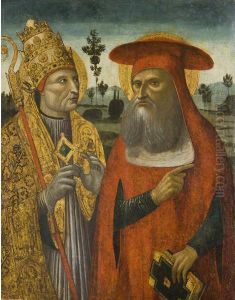Giovanni Barbagelata Paintings
Giovanni Barbagelata was an Italian painter active during the Baroque period, born in 1642 in Genoa, Italy. He is not as widely recognized as some of his contemporaries, and as a result, details about his life are not as readily available as those of more prominent artists from the same era. However, it is known that he contributed to the rich tapestry of Baroque art in Italy, which was characterized by its dramatic use of color, light, and shadow, as well as its emotional intensity and dynamic compositions.
Barbagelata's work was primarily centered in his hometown of Genoa, where he painted religious subjects for local churches and for private patrons. He was part of a vibrant artistic milieu in Genoa, which had been enriched by the presence of artists such as Peter Paul Rubens and Anthony van Dyck in the previous century. Barbagelata's style would have been influenced by these artists, as well as by the prevailing trends of the Italian Baroque, which favored theatricality and movement.
Despite his relative obscurity, it is likely that Barbagelata was a competent painter whose works satisfied the tastes and religious sensibilities of his patrons. His paintings would have adorned the walls of churches and the homes of the wealthy, contributing to the visual culture of the time. Unfortunately, because Barbagelata is not widely studied, specific works attributed to him are not well-documented, and his oeuvre remains largely uncelebrated compared to that of his more famous peers.
Giovanni Barbagelata is believed to have died in 1732. While his legacy does not compare to that of the great masters of his time, his life and work remain a testament to the depth and diversity of talent present during the Baroque period in Italy. His career reflects the broader historical narrative of artists who, while not achieving widespread fame, nonetheless played a role in the artistic developments of their local contexts.
